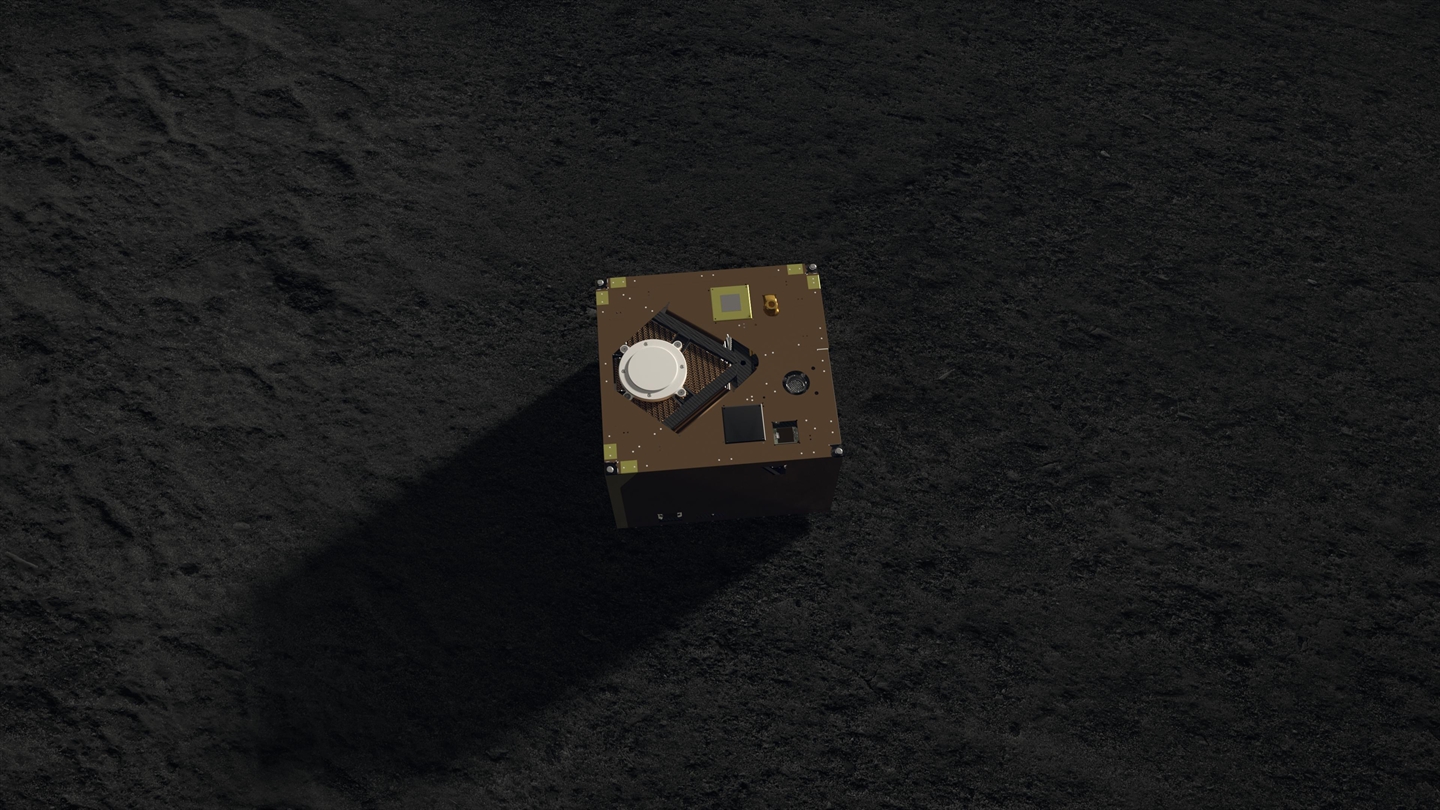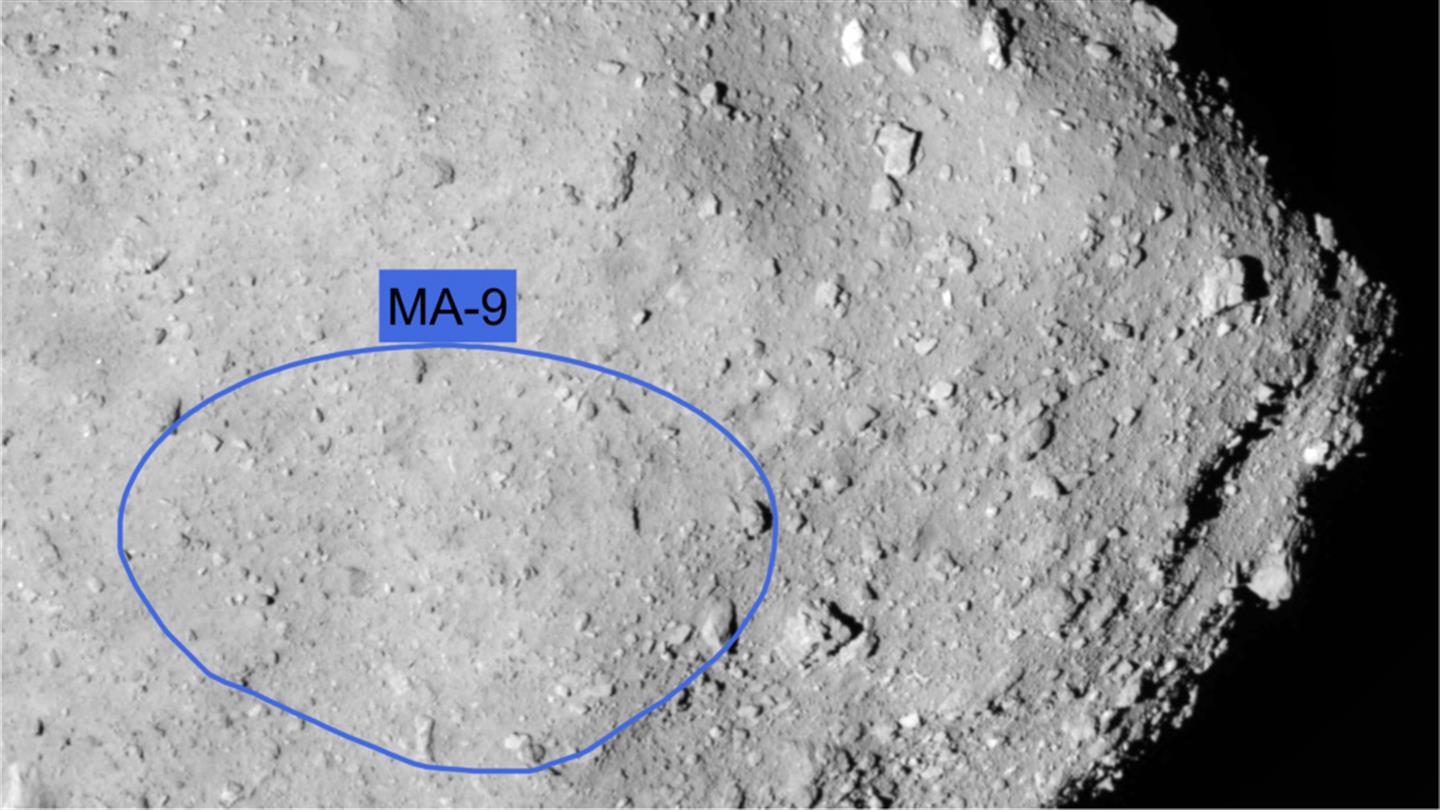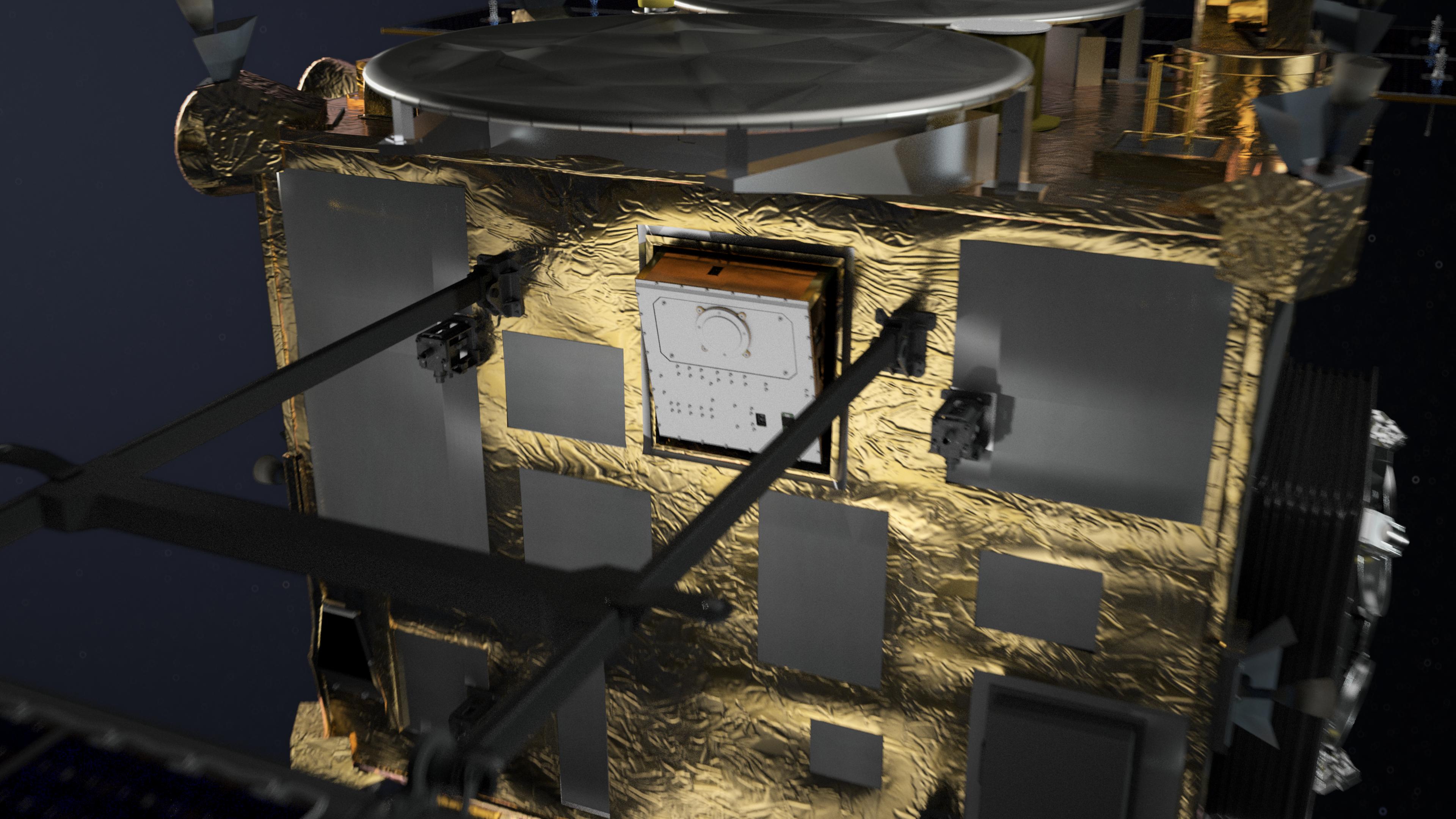Tiny German Spacecraft Poised for Hopping Landing on Asteroid Ryugu
A tiny German asteroid lander is expected to touch down on its target late Tuesday, Oct. 2 (EDT). The craft is on a quest to send back data about the mysterious Ryugu's surface, whose precise composition continues to elude investigators more than three months after the Japanese Hayabusa2, which will deliver MASCOT to the surface, arrived at the space rock.
The lander, named MASCOT (Mobile Asteroid Surface Scout), is expected to separate from its carrier spacecraft Hayabusa2 at 9:58 p.m. EDT (0158 GMT) on Tuesday, officials from the German Aerospace Center (DLR) said in a statement. It will be the third lander dropped on asteroid Ryugu by Hayabusa2, which successfully landed two small MINERVA-II1 landers last month. MASCOT is a project of both DLR and the French space agency, CNES.
MASCOT's exact landing site can't be predicted, because the spacecraft will bounce as far as 200 meters (660 feet) from its initial touchdown location in the asteroid's southern hemisphere, officials said. [Wow! Asteroid Ryugu's Rubbly Surface Pops in Best-Ever Photo]
DLR called MASCOT's forthcoming journey a "descent into the unknown." That description echoed some of the feelings that European Space Agency and DLR controllers surely felt back in 2014, after releasing the Philae lander from the comet-orbiting Rosetta spacecraft near Comet 67P/Churyumov-Gerasimenko.

Philae's landing didn't exactly go to plan. The craft's securing harpoons never fired, and the lander bounced twice, flying for 2 hours before coming to rest in a shady spot. Locked away from the sun, the solar-powered lander died within a few days. It took two years for Rosetta to track down exactly where Philae fell. Incredibly, though, Philae did send back scientific data during its limited time on the surface with battery power.
Japan also is trying for better luck after its predecessor asteroid mission, Hayabusa. That mission was supposed to deploy a lander called MINERVA (Micro/Nano Experimental Robot Vehicle for Asteroid) almost exactly 14 years ago, in November 2004. The little lander, however, drifted away into space and never touched down on its target, asteroid Itokawa. Hayabusa2's recent MINERVA-II1 landings were a vindication of sorts for the Japan Aerospace Exploration Agency.
Free, free falling

MASCOT will have a short mission, but this is according to plan. It is designed to last about 16 hours on the surface. But that's assuming the lander makes it safely and is able to send data back to Earth.
Get the Space.com Newsletter
Breaking space news, the latest updates on rocket launches, skywatching events and more!
MASCOT's target zone is in the southern hemisphere of Ryugu, in a smooth area with a gentle day and night cycle that shouldn't hurt the lander. Temperatures there will range between 116 and minus 89 degrees Fahrenheit (47 degrees and minus 67 degrees Celsius).
To get there, Hayabusa2 will first take a dive. The spacecraft has orbited Ryugu from as high as about 12 miles (20 kilometers). But to release MASCOT, Hayabusa will zoom down to a nail-biting 200 feet (60 meters).
MASCOT will then tumble alone toward Ryugu, uncontrolled and unpowered. But this is no suicidal plunge; due to the asteroid's low gravity, MASCOT's descent will get only as fast as 8 inches (20 centimeters) per second. A typical adult human walks seven times faster than that, DLR officials said.
No more than 10 minutes after leaving Hayabusa2, MASCOT will make its first touchdown on the surface of Ryugu. The lander will bounce several more times before coming to rest. That will be a dangerous few moments; MASCOT might get stuck in a crevice. Or, if it bounces too high, the lander could be lost forever, warned project manager Tra-Mi Ho.
"A smooth descent is crucial; otherwise, MASCOT will bounce back up from the asteroid like a rubber ball due to the low gravitational pull and be lost in space," Ho said in the same statement.

Working on its own
MASCOT will at first operate on its own, running through prepared command sequences. The plan is for the spacecraft to set itself upright automatically and do measurements by itself for a few hours.
If all goes well, scientists at the MASCOT control center in Cologne, Germany, may ask the lander to make one more hop on the surface to get a different point of view, officials said. If that happens, MASCOT will sail only about 33 feet (10 m) away. That's being done to preserve battery life for collecting scientific data.
The tiny, 22-lb. (10 kilograms) MASCOT will gather data using four instruments and will send its scientific data and images home a few days after landing. This data will include measurements of the asteroid's mineralogy, surface temperature and magnetic field.
The spacecraft will send only a few updates back to Earth, because the communication windows are limited and Hayabusa2 will be sending back "huge quantities of data" around the time of MASCOT's landing and operations, DLR officials added.
While the MASCOT mission has a limited time span, Hayabusa2 will spend the coming months deploying more landers. It will even make a few touchdowns of its own on Ryugu. Hayabusa2 will then leave the asteroid in 2019, samples in hand, for a planned return to Earth in December of 2020.
Follow us @Spacedotcom, Facebook or Google+. Originally published on Space.com.
Join our Space Forums to keep talking space on the latest missions, night sky and more! And if you have a news tip, correction or comment, let us know at: community@space.com.

Elizabeth Howell (she/her), Ph.D., was a staff writer in the spaceflight channel between 2022 and 2024 specializing in Canadian space news. She was contributing writer for Space.com for 10 years from 2012 to 2024. Elizabeth's reporting includes multiple exclusives with the White House, leading world coverage about a lost-and-found space tomato on the International Space Station, witnessing five human spaceflight launches on two continents, flying parabolic, working inside a spacesuit, and participating in a simulated Mars mission. Her latest book, "Why Am I Taller?" (ECW Press, 2022) is co-written with astronaut Dave Williams.









